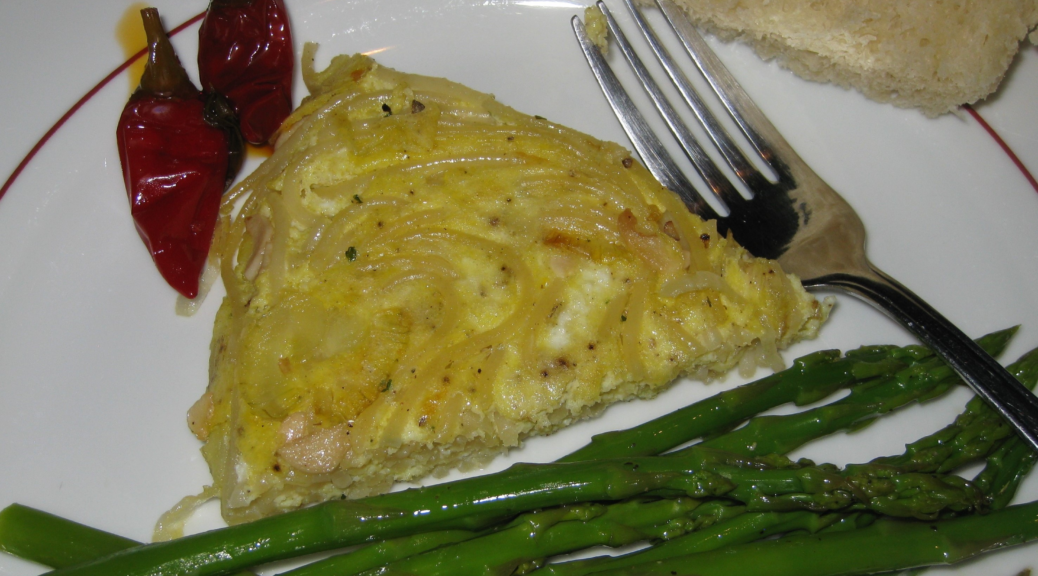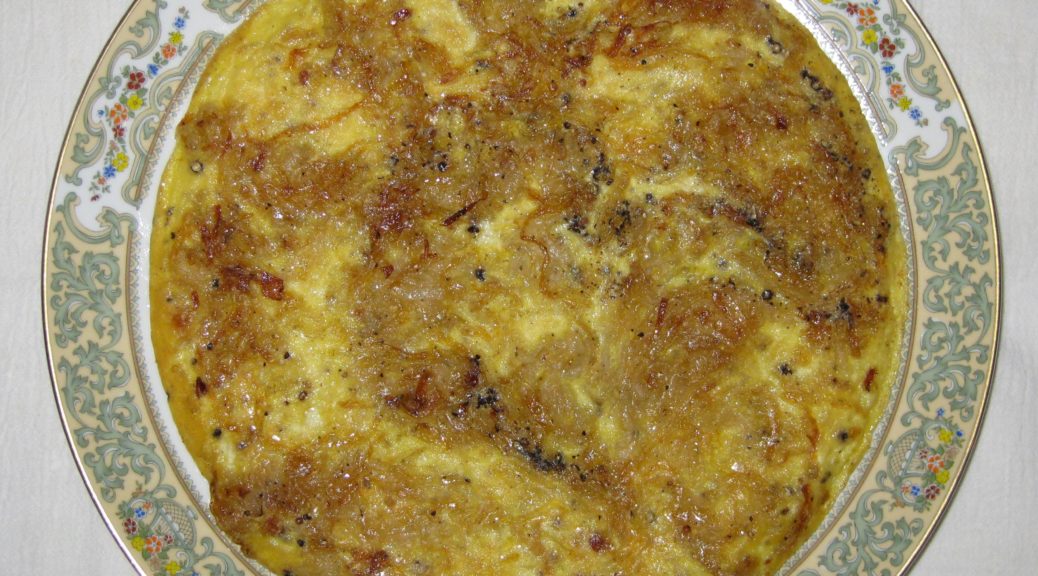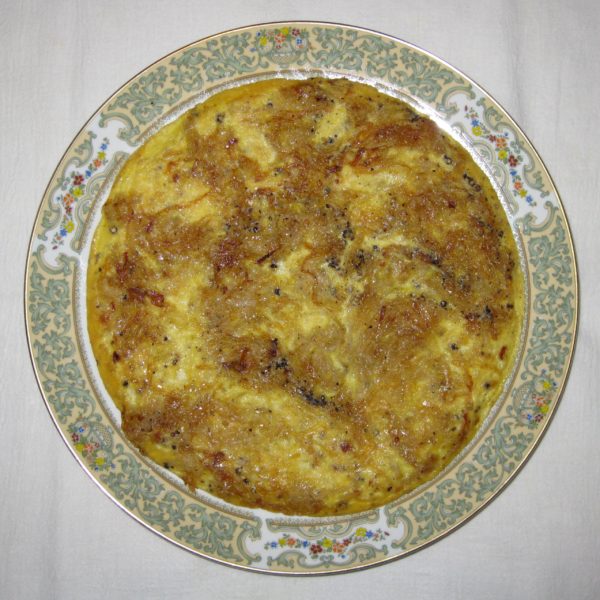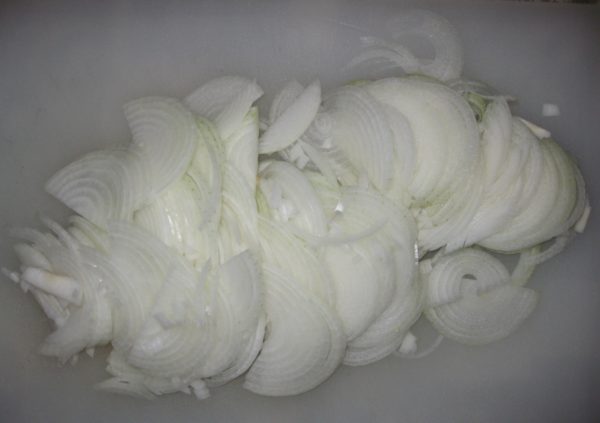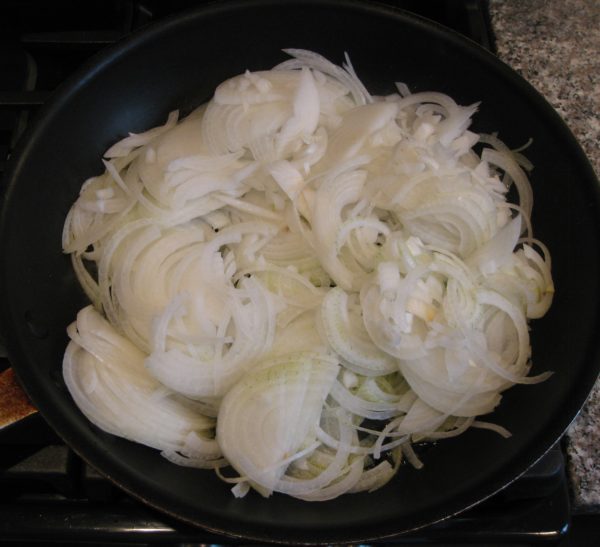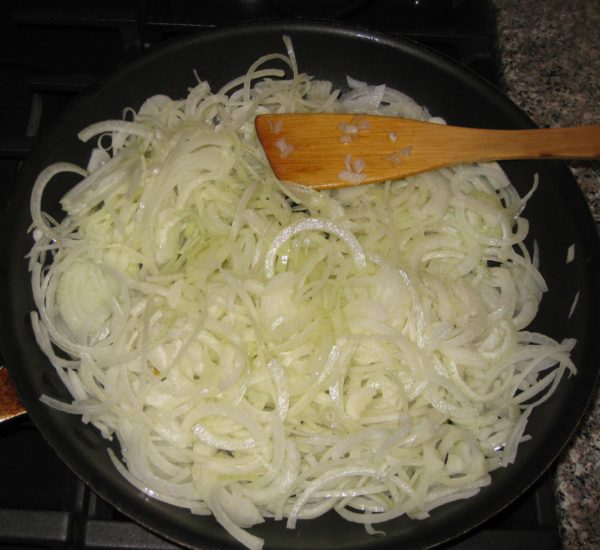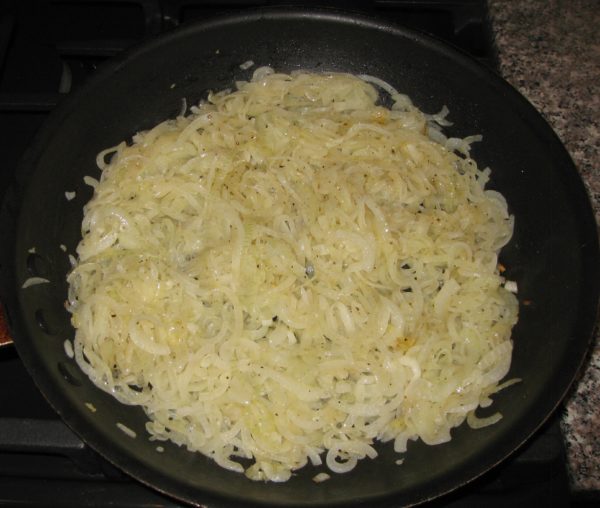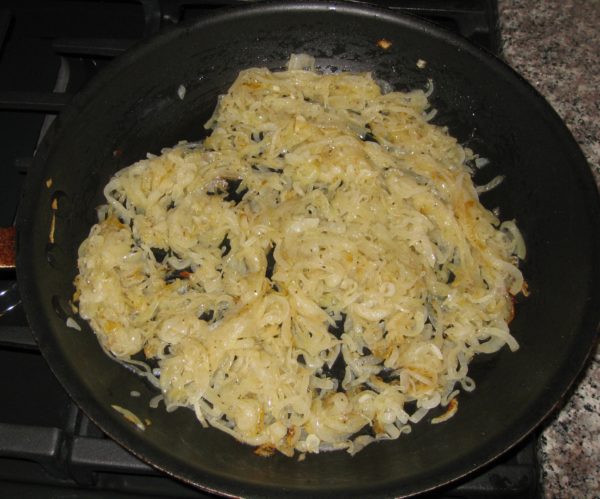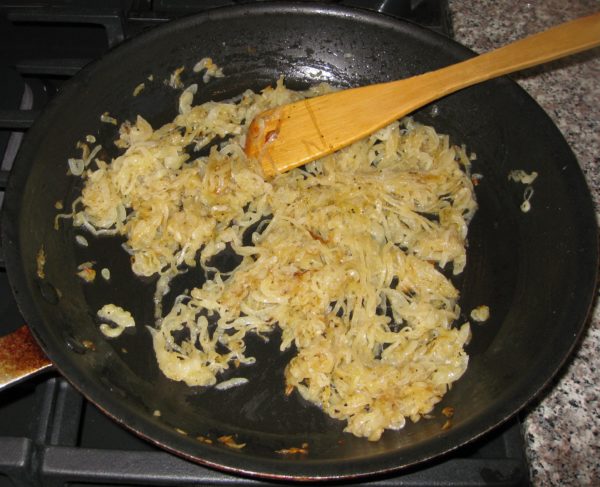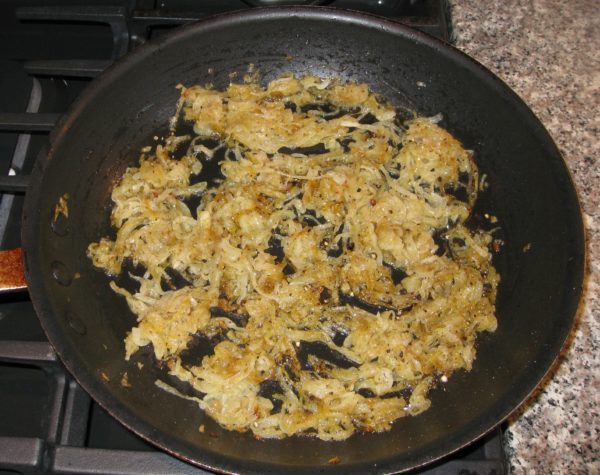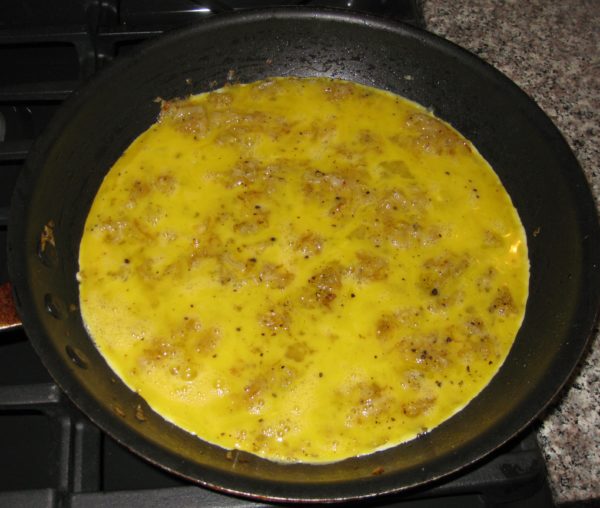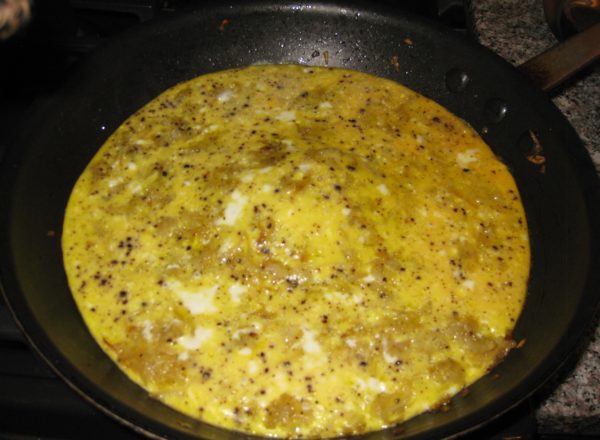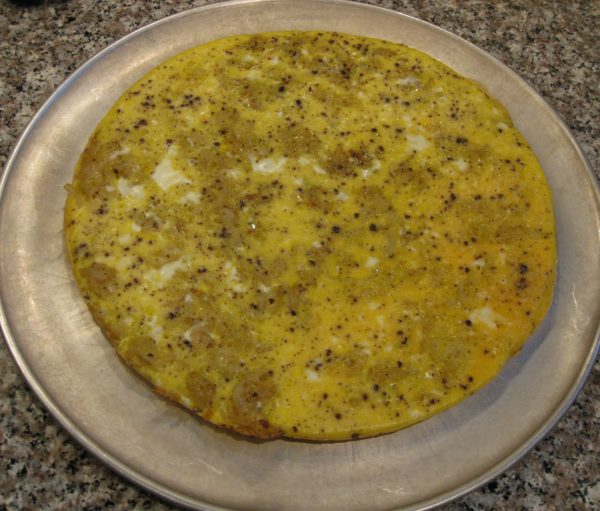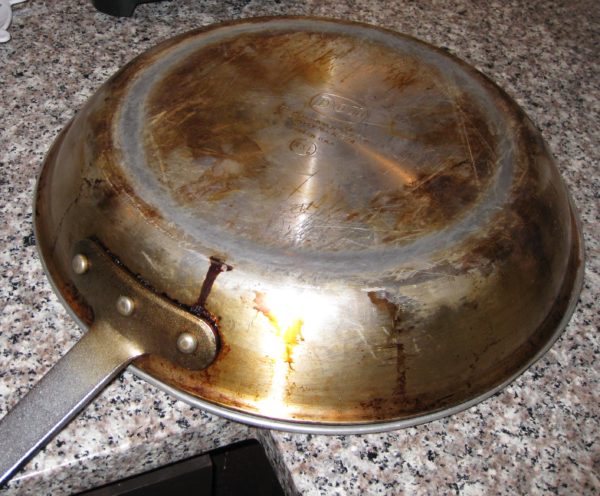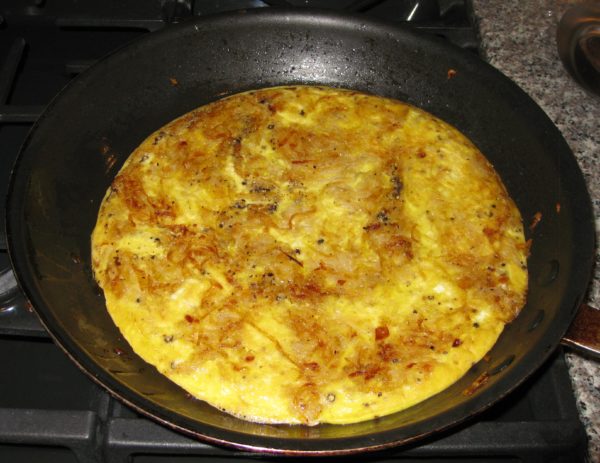March 9, 2018
Although I typically heat up left over pasta and have it for lunch, it definitely pales in comparison to the freshly made dish.
In the pre-microwave days of my youth, leftover pasta was heated gently in a sauté pan with a little bit of water added. Now, the microwave makes quick work of the same task.
If you have leftover pasta, though, consider turning it into a frittata. I think it constitutes an entirely new dish, and not leftovers, because it’s being turned into something totally different.
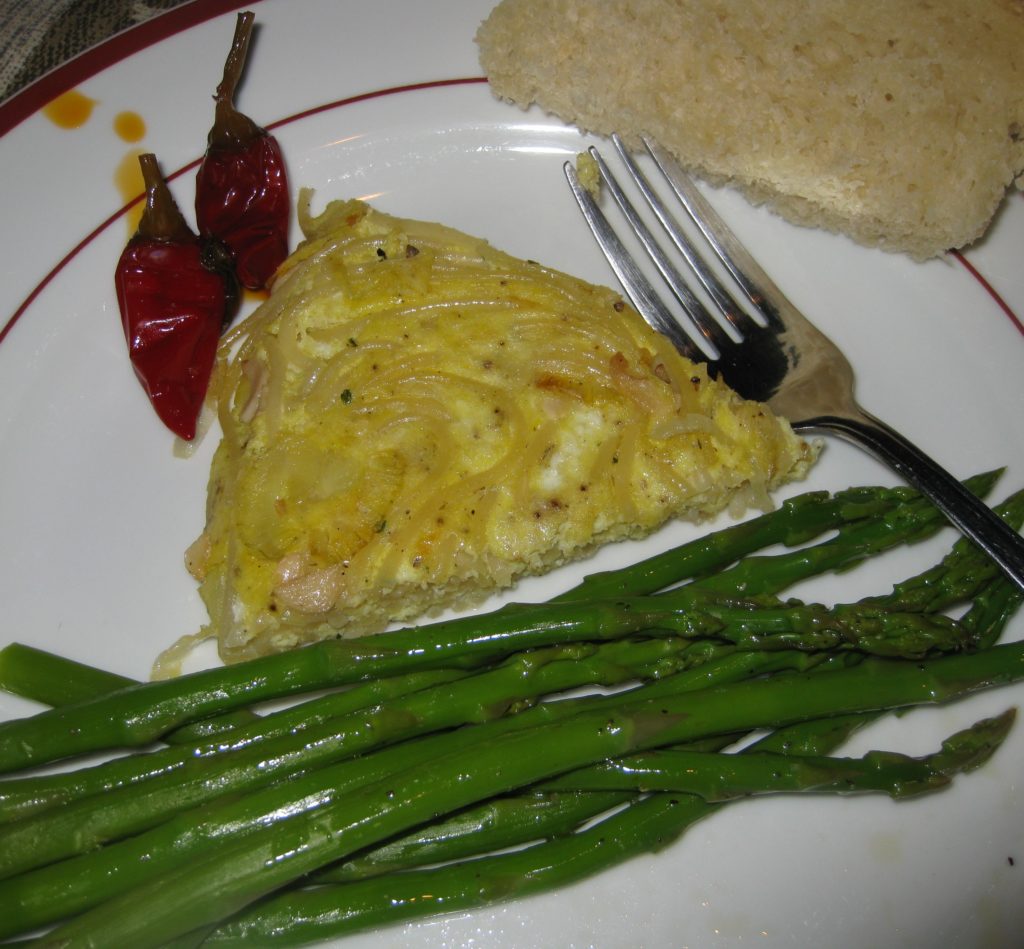
We eat so much pasta in our house that if we turned the leftovers into frittate (the plural of frittata) our dinners would alternate between pasta and frittata almost every day of the week! That’s why some of the leftover pasta is simply heated up for lunch.
Follow us on your social media platform of choice
A frittata is often referred to as an Italian omelet. But an omelet it most definitely is not. It is cooked using a different technique with a different intended outcome.
Calling a frittata an Italian omelet is like calling everything made from ground beef a hamburger. (OK, off my soapbox for now.)
You can use most any combination of pasta and sauce for a frittata but you don’t want there to be lots of extra sauce or it will be difficult to get the eggs to set.
Most often, I’ll use a long thin pasta, like spaghetti or spaghettini with either a tomato sauce or anchovies and garlic. They both work well. That said, I’ve made frittate from a wide array of leftover types of pasta. Shape is no object!
If you happen to know somebody who raises chickens or if you have access to freshly laid eggs at a farm stand or farmers’ market this is an excellent use for them. There’s little that stands between you and the eggs, so using really good, fresh eggs is noticeable.
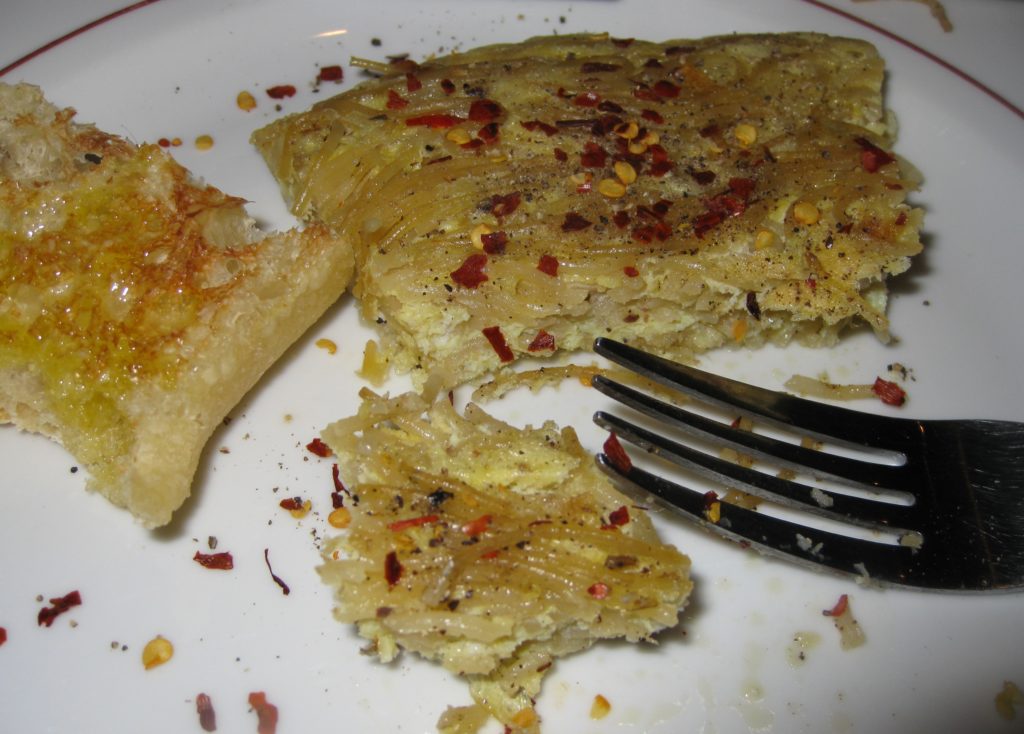
As I mentioned earlier this week, I’m losing the battle to raise chickens at our house.
Click HERE to join our mailing list and you’ll never miss a recipe again!
A frittata is cooked slowly in a sauté pan until the eggs set and turn golden brown on the bottom. I prefer to do this with the pan covered as it aids in setting the top of the eggs, too.
Once the bottom is set, there are two methods to finish the frittata. One is to put the frittata under the broiler or in the oven. The good folks at Wikipedia think this is the only way to do it. In fact, I would suggest that most Italians do not do that. They simply flip the frittata over. (OK, I was back on the soapbox for a moment there.)
If you’re going to finish the frittata by flipping, however, you need to be sure that the top of the frittata is not runny. It should be just barely set.
In case you missed it, I previously published a recipe for an onion frittata. Although it uses a large quantity of onions, they cook down into sweet, golden deliciousness before the eggs are added.
And…before we leave the subject of leftovers…leftover frittata makes a great filling for a sandwich, especially with a few oil-cured Calabrian peppers!
If you have a favorite family recipe and a bit of a story to tell, please email me at santafecook@villasentieri.com and we can discuss including it in the blog. I am expanding the scope of my blog to include traditional recipes from around the country and around the world. If you haven’t seen Bertha’s Flan or Melinda’s Drunken Prunes, take a look. They will give you an idea of what I’m looking for.
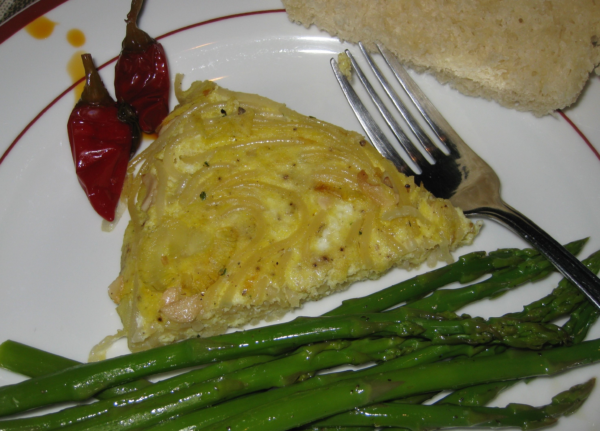
| Prep Time | 10 minutes |
| Cook Time | 1 hour |
| Servings |
people
|
- 1/2 pound leftover cooked pasta with some sort of sauce Note: 1/2 lb is the uncooked weight
- 6 eggs
- 1/4 cup extra virgin olive oil
- 2 cloves garlic minced, optional
- 1/2 onion chopped or sliced, optional
- 1/4 cup Parmigiano Reggiano cheese grated, optional
- salt to taste
- black pepper freshly ground to taste
Ingredients
|

|
- Heat the oil in a 12 inch (preferably non-stick) sauté pan.
- Add the onion or garlic and sauté over medium heat until the onion is soft and caramelized or the garlic is fragrant.
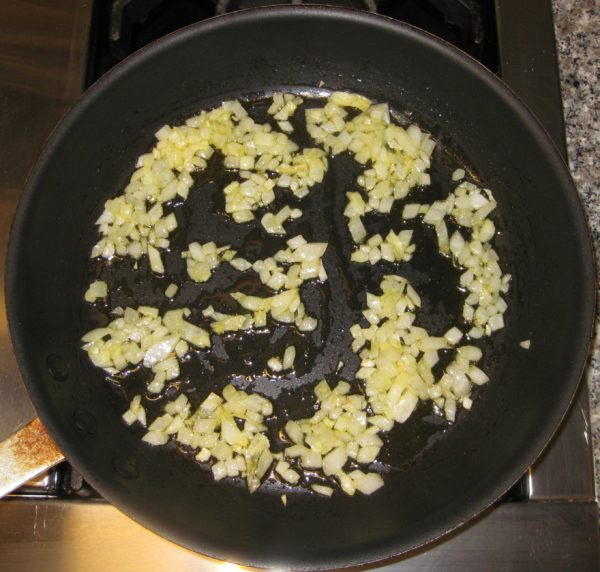
- Add the pasta and sauce and heat gently.
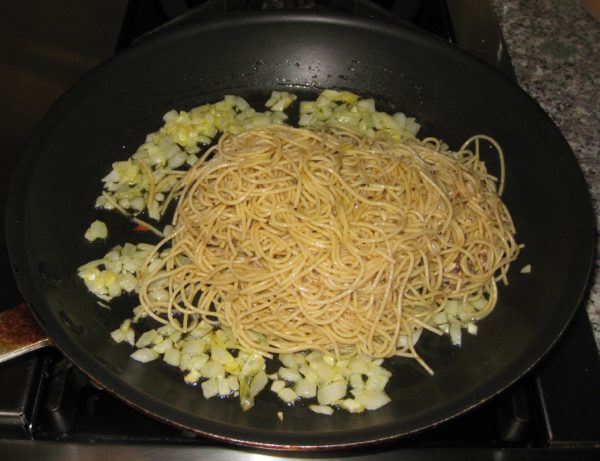
- Toss the pasta a few times to be sure it heats evenly.
- Meanwhile, beat the eggs with salt and pepper to taste.
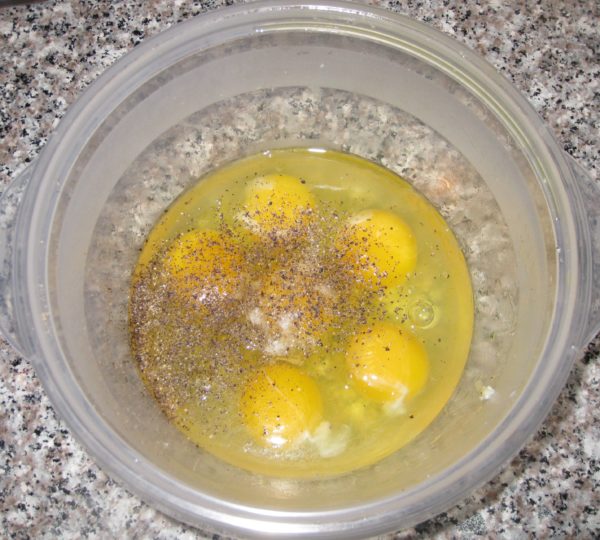
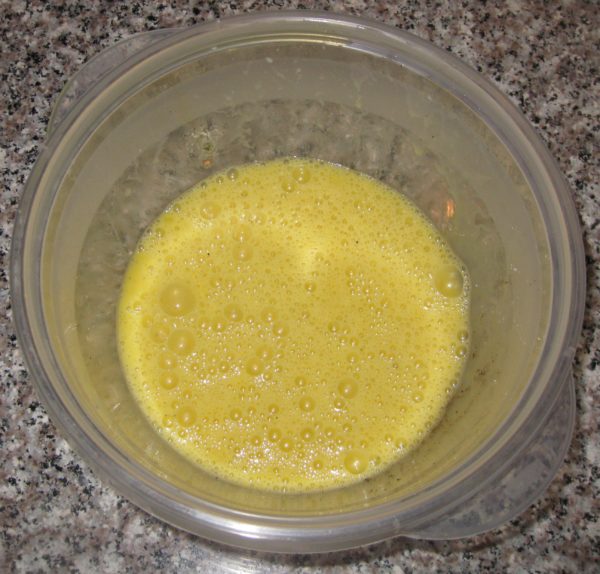
- When the pasta is heated through, spread it evenly on the bottom of the pan.
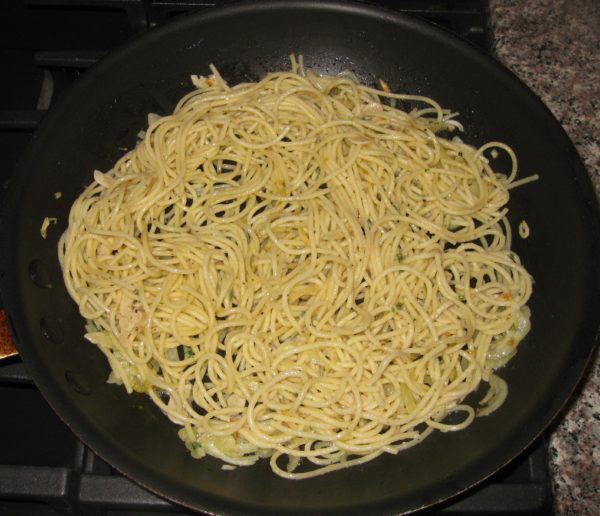
- If you cannot clearly see enough of a slick of oil on the bottom of the pan to protect the eggs from sticking, add a bit more. (Some sauces sop up the oil more than others.)
- Pour the eggs over the pasta, being careful to distribute them evenly.
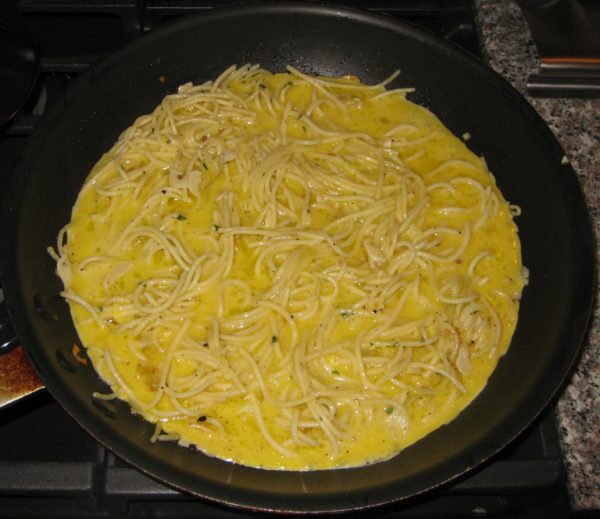
- If using cheese, sprinkle it over the top of the eggs.
- Cover the pan and reduce the heat to low.
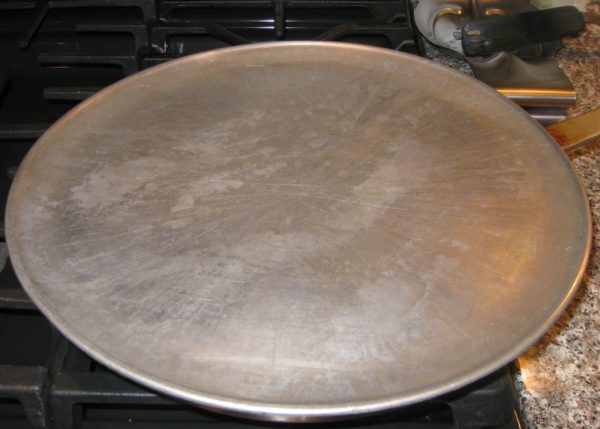
- Keep the eggs covered the whole time and move the pan around on the stove, even putting it off-center much of the time, to be sure the heat is evenly distributed around the bottom of the pan.
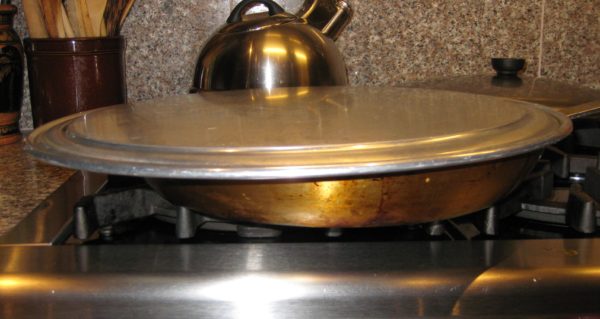
- Cook until the top of the eggs is just set. That is, there is no runny egg left. This will take approximately 25-30 minutes.
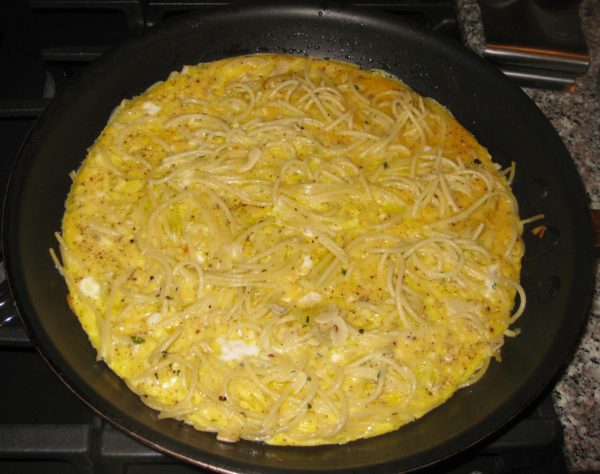
- When the eggs are set, slide them out of the pan onto a cookie sheet or pizza pan.
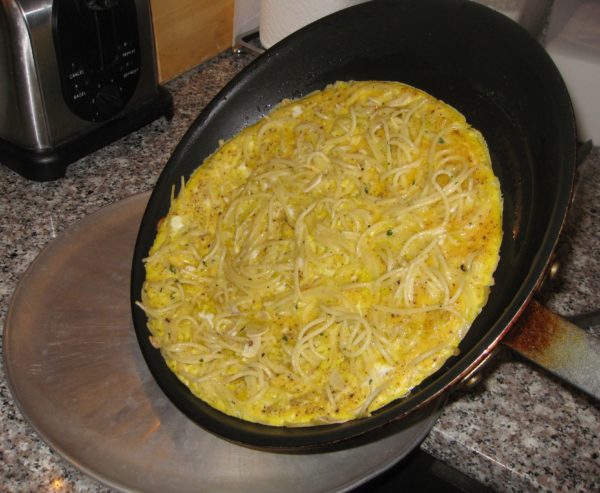
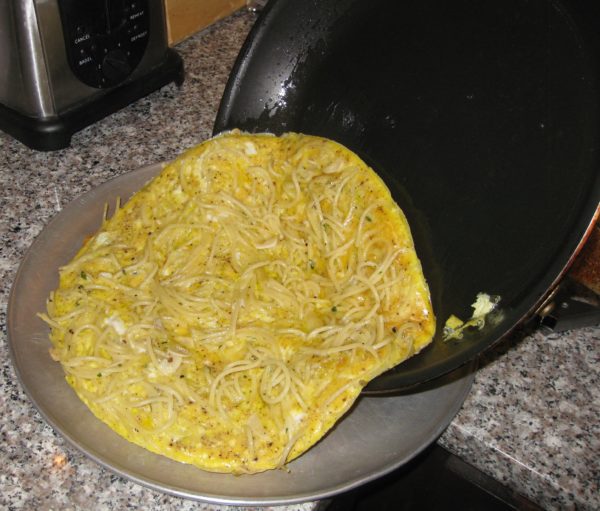
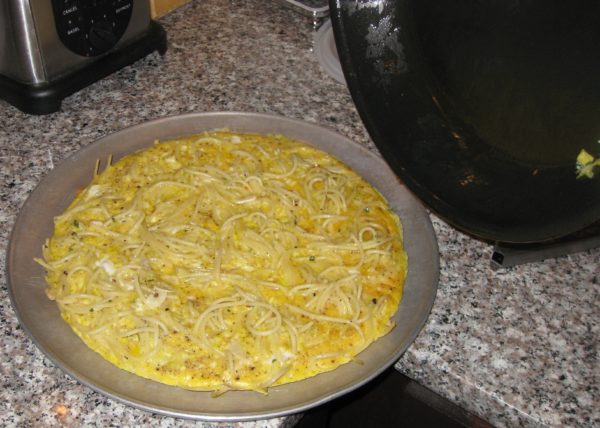
- Put the sauté pan upside down on the eggs and then flip the whole set-up over.
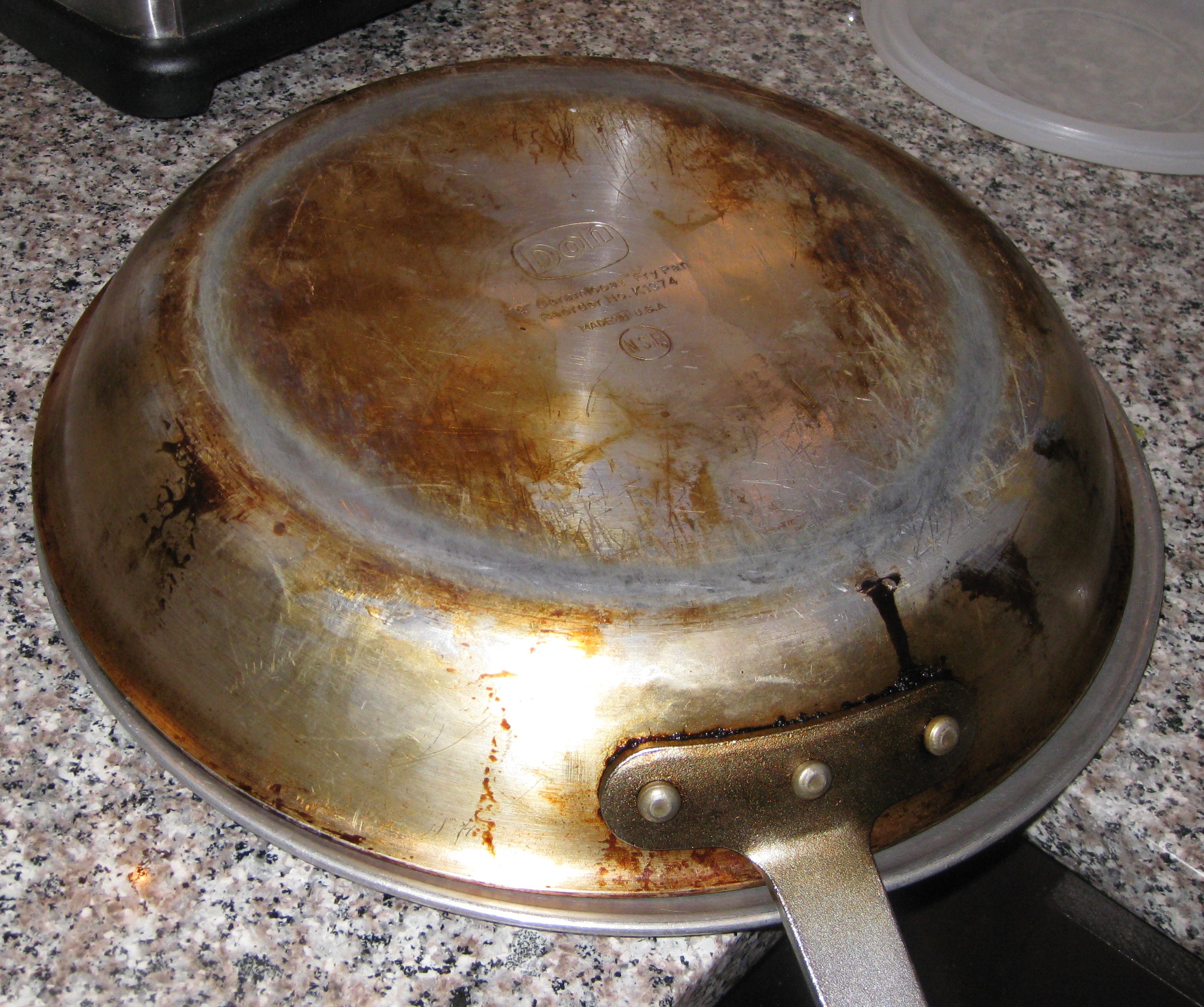
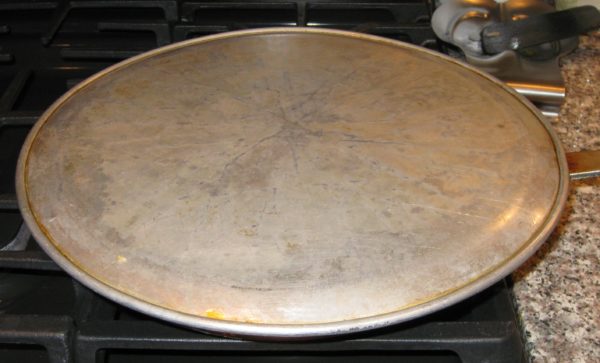
- Return the eggs to the heat, uncovered, for approximately 5 minutes to lightly brown the bottom.
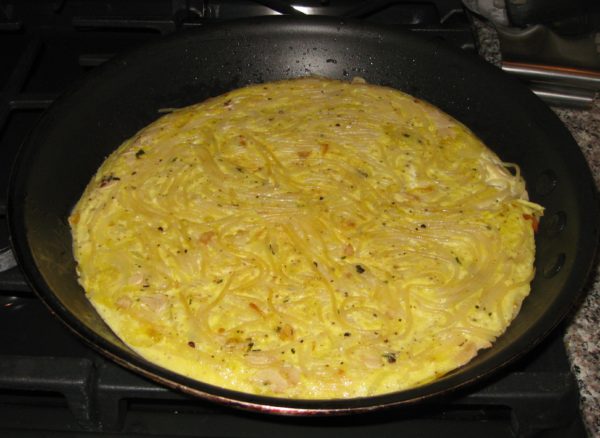
- Slide on to a serving platter and cut in wedges to serve.
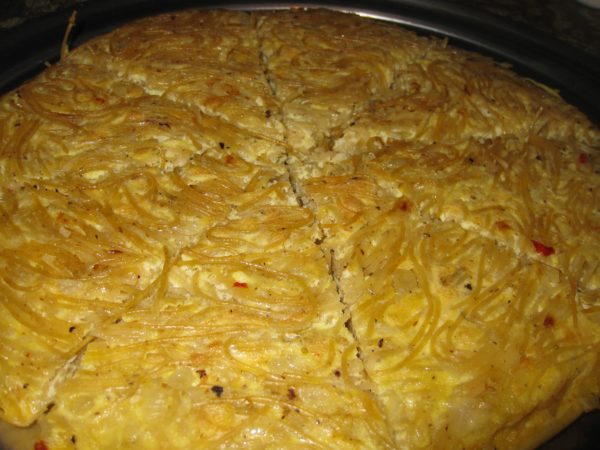
This is where you can find my recipe for Spaghettini with Anchovy and Garlic.
Copyright © 2018 by VillaSentieri.com. All rights reserved.

